Have you always wanted to see the Monarch Butterflies in Mexico? Planning a winter trip to watch the migrating butterflies is a bucket list experience for boomer nature lovers. And it’s important to appreciate them while you can as their winter habit is threatened by illegal logging and climate change.
Debi Lander of ByLanderSea, recently traveled to Mexico’s Monarch Butterfly Reserves. She shares her experience and tips for how you can visit.
I am standing at 10-11,000 feet on a volcanic mountaintop in central Mexico, surrounded by an astonishing sight—millions upon millions of monarch butterflies gracefully flutter around me. The dense 100-foot-tall oyamel fir trees of the Oyamel Forest allow beams of sunlight to penetrate through the trees, resulting in a mesmerizing spectacle.
These light rays create a captivating dance of orange and black dots against the tree-studded backdrop. Witnessing this surreal scene feels almost mystical, especially when one considers that many of these incredible monarch butterflies have traveled an astonishing 2,800 miles from eastern North America to reach this remote winter sanctuary in Central Mexico.
Table of Contents
Mingling with Monarch butterflies in Mexico
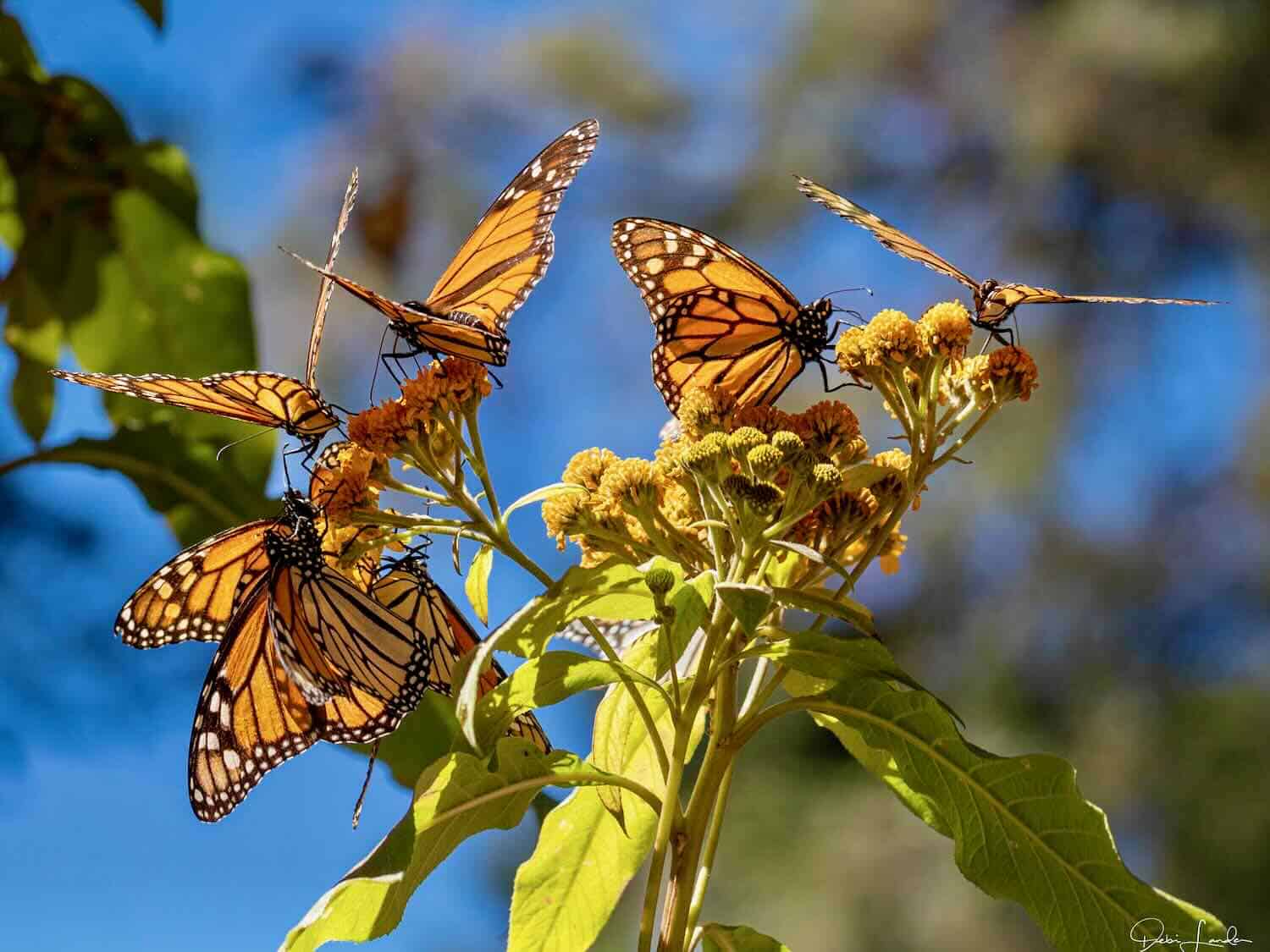
I, too, journeyed far to get here, and not without some struggles. This trip was postponed for two years due to the pandemic. Finally, I boarded a flight to Mexico City, a city of nine million, to meet up with a Craftours group. We intend to explore tiny villages to see the monarch butterflies’ overwintering sites and learn about their miraculous migration.
Researchers knew they flew south to Texas and on into Mexico, but exactly where no one knew. A program to tag their wings led to the previously hidden habitats of the monarch butterfly migration.
The evening of my arrival, the group gathered to watch a documentary that helped explain the hazardous migration routes to the remote sites. Before 1975, the fragile monarchs’ southern migration location remained a mystery.
Boomer Travel Tip
MedjetAssist Members who are hospitalized 150 miles from home receive medical transport to a home-country hospital of choice. Memberships from $99.
Monarch butterflies’ Mexico migration
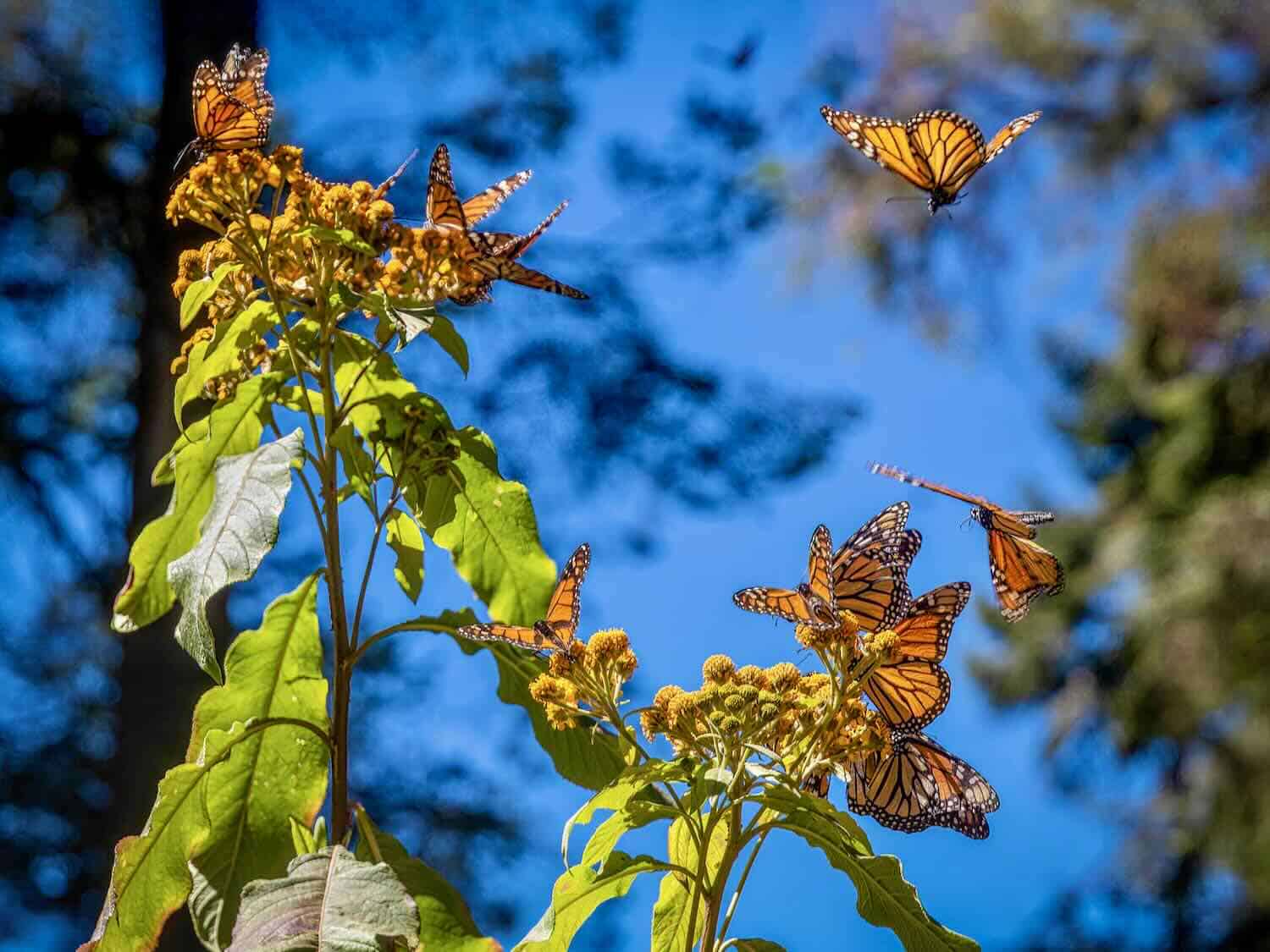
Every fall, as the weather turns cooler up north and the sun’s angle dips to 57 degrees, the monarch butterflies (danaus plexippus) start the long journey to their sanctuaries. (The migrating generation is known as Methuselah after the biblical man who lived for 987 years.)
These late-summer butterflies live seven to eight months—much longer than the two-to six-week lifespans of generations born earlier in the year. They develop flight muscles and store lipids for their perilous journey to the ideal high-altitude habitat in the oyamel fir forests of Central Mexico. They do not reproduce until the following spring when they return through Texas, lay their eggs, and then die.
The sanctuary temperatures are cool enough to slow the monarchs’ metabolism, and the dense canopy of fir trees protects them from strong wind, rain, and occasional snowfall. From November to April, the reserve provides a rare opportunity to immerse into the monarchs’ world, with mid-January to February being the best times to visit.
Backed with this knowledge and an expert guide: Kylee Baumle, author of The Monarch, my group boarded a bus the following morning to head to the mountains.
Boomer Travel Tip
Want to add on to your trip to Mexico? Follow Debi’s tips for how to spend 3 days in San Miguel.
Archeological Ruins of Los Alzati
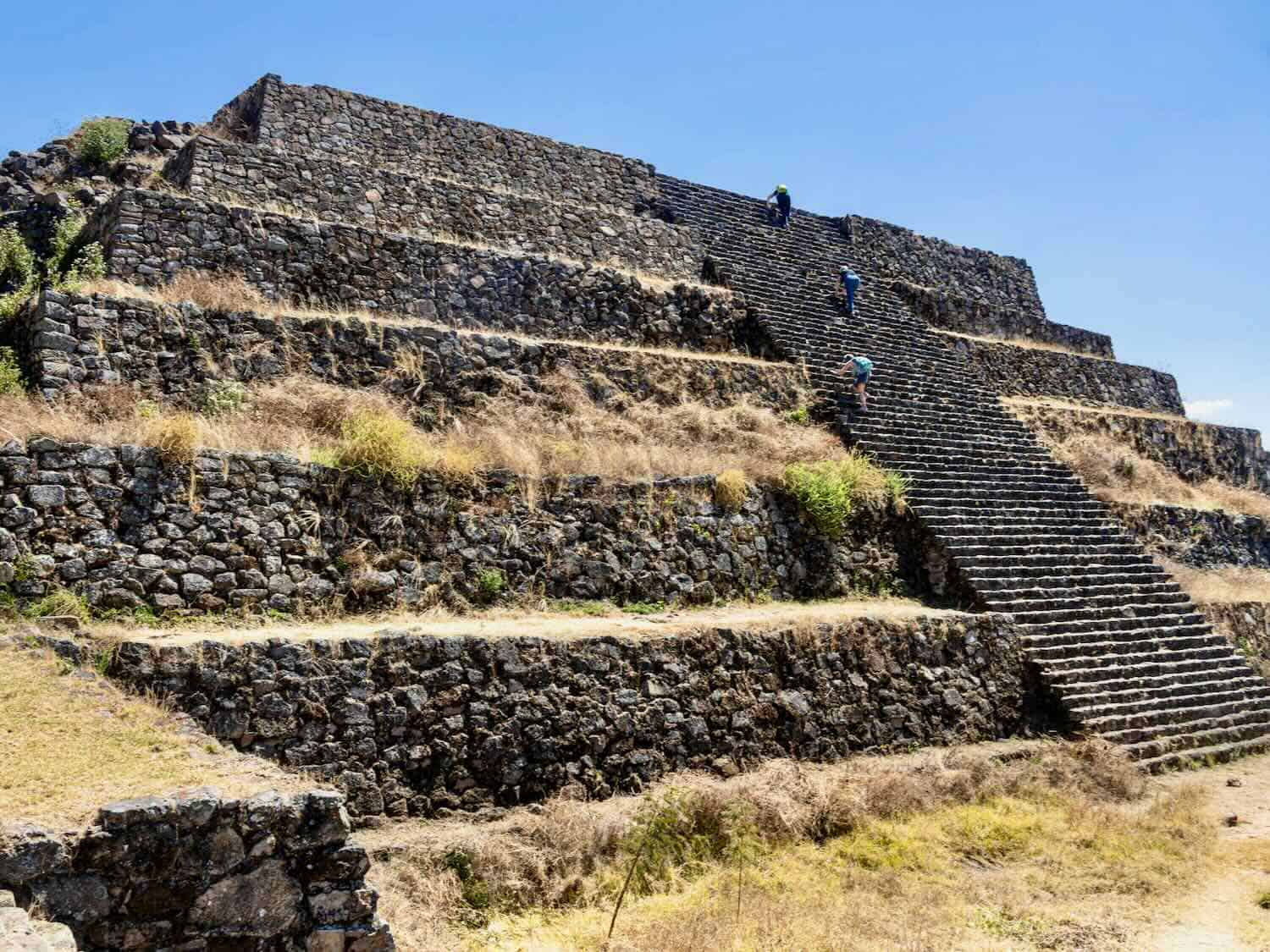
After three hours, we stopped to pick up a local guide. We then traveled to Zitácuaro, the city that would be our base city for exploring the monarch butterfly sanctuaries. But, our itinerary called for a different outing this day, as it was too late to visit the monarchs.
We continued about ten miles north to an archaeological site called San Felipe los Alzati (official website) that lies nearly hidden. Fortunately, our bus driver found the way and maneuvered the hilly, dirt roads. Here, we stopped to explore and climb the pyramids dating between AD 800 and 1200.
The main pyramid of Los Alzati holds historical significance as the ceremonial center of the Purepecha tribe, who were notable for being enemies of the Aztecs and one of the few indigenous groups that managed to resist their conquest. In addition to its ceremonial role, archaeologists speculate the location also served as a defensive watch point.
This remarkable site, rediscovered in 1963, currently boasts two pyramids and a square. Our knowledgeable local Mexican guide, Andres, informed us about the presence of petroglyphs and encouraged us to make our way carefully up the stairs.
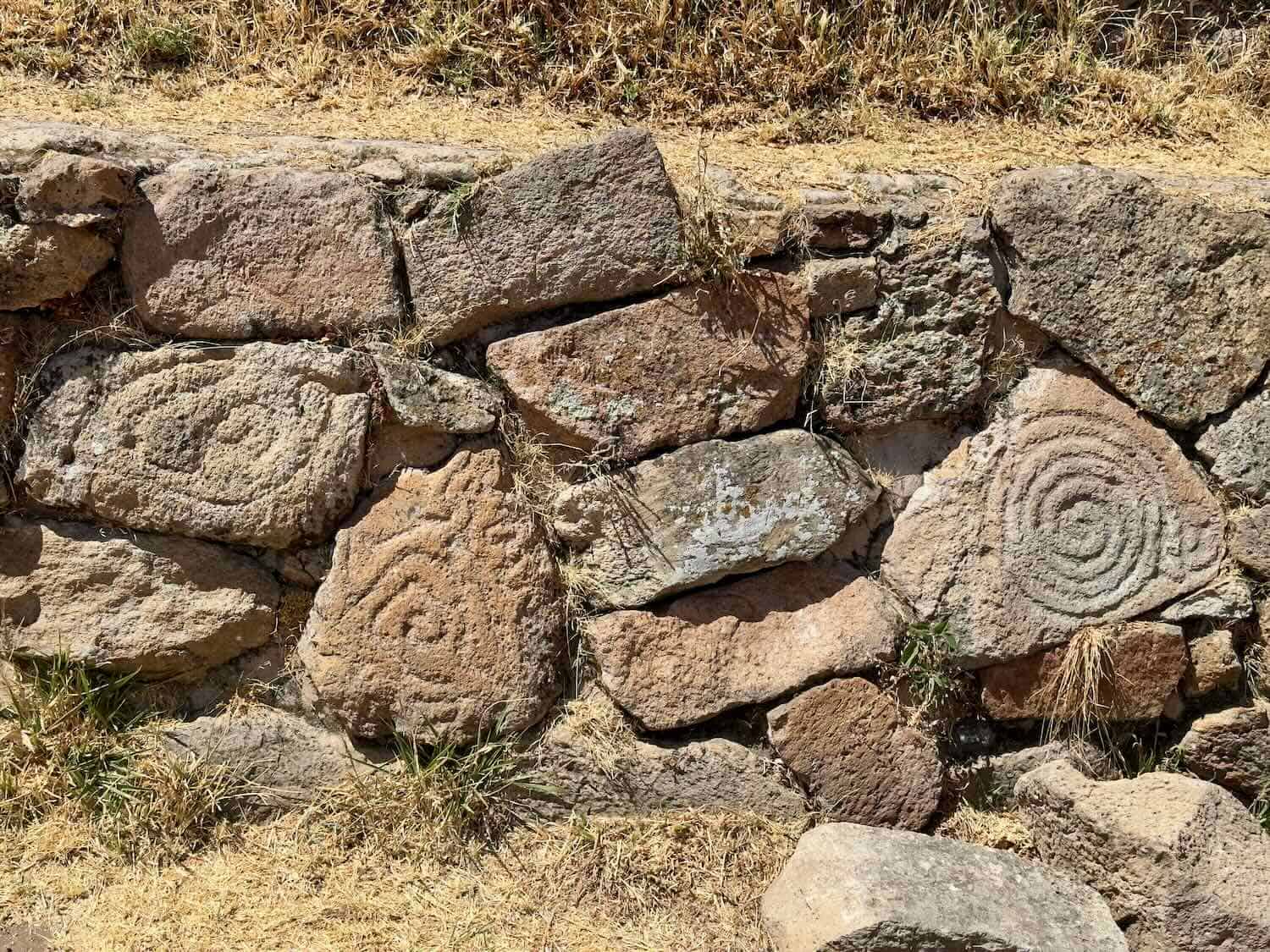
Although the steps were narrow for my feet, I navigated them by sidestepping. Reaching the pyramid top, I was greeted by a panoramic view confirming the strategic importance as a lookout over the Zitácuaro Valley and the surrounding forests.
Descending another set of stairs on the side, I explored the pyramid’s base and discovered numerous stones embedded in the walls. They contained intriguing carvings suggesting ancient beings, the sun god, or astrological events.
The rare opportunity to climb this ancient structure felt special, as very few pyramids even allow visitors to touch them. I suspect the remote location limits the number of visitors.
El Rosario Butterfly Sanctuary
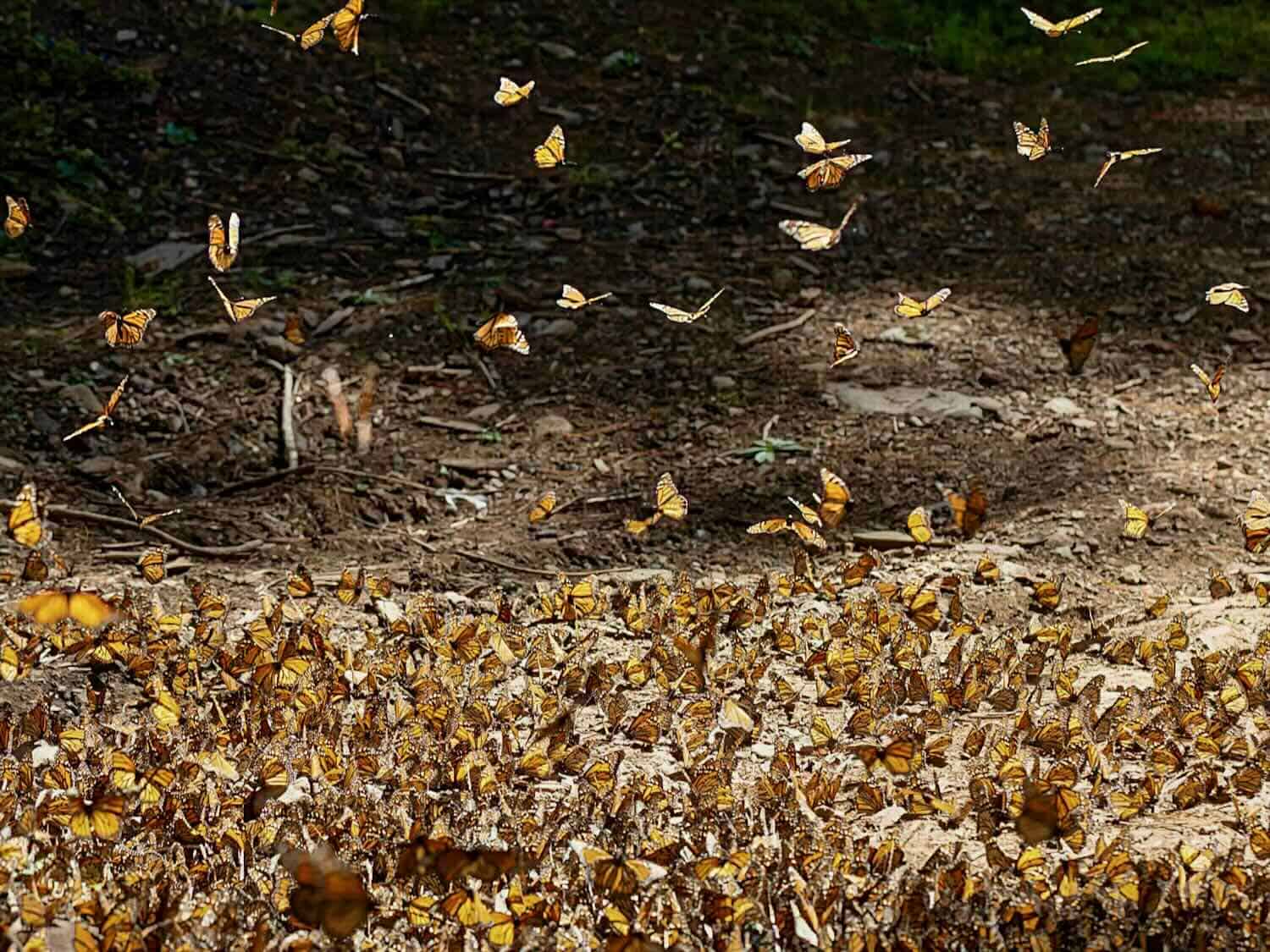
We overnighted in Zitácuaro, and the following morning, we were off to El Rosario, the largest and most visited sanctuary in the Monarch Butterfly Biosphere. (The Monarch Butterfly Biosphere Reserve includes 12 sanctuaries, but only five are open to the public.)
If the drive to the pyramid took us off the beaten path, we went beyond the grid, going to the butterfly sanctuary, a UNESCO World Heritage Site. Our bus seemed larger than both sides of the skinny road.
We passed little towns clinging to the edge of hills and many farming fields. Then, we started to climb, switch-backing across numerous hairpin turns leading up to the mountain hideaway.
As we got closer, our excitement grew because we began to spot monarch butterflies in the air. With each passing mile, the number of these majestic insects multiplied.
Stepping off the bus, it felt like I had entered a magical snow globe, with a cascade of monarch butterflies gently descending from the sky instead of snowflakes. Their delicate wings created a soft fluttering sound, accompanied by our delighted squeals of joy.
Hiking at altitude to see the Monarchs

At this high altitude, the air was noticeably thinner, and we needed to leave the base and go higher for better views. So, most of my group bought tickets to ride horses up the steep incline, saving us from huffing and puffing along the challenging climb.
Even inexperienced riders had nothing to worry about as very fit men led the horses along the steep trail. The 20-minute journey took us through lush jungle foliage, leading into the beautiful canopy of oyamel trees that thrive exclusively at altitudes ranging from 6,900 to 13,500 feet.
Upon dismounting, I felt grateful for choosing to ride a horse, as our sanctuary guide informed us that we still needed to hike even higher, potentially ascending an additional 2,000 feet.
In late February, when the temperature at this altitude reaches over 60 degrees, millions of butterflies clustered together over the winter now search for nectar and water. Sometimes they gather in puddles on the ground, lapping up the liquid. They need to build themselves up for the coming spring migration heading back north.
I admit, I got out of breath during the hike and stopped several times to let my rising heart rate recover. I live at sea level in Florida, so the altitude made me feel like a slug, but thankfully no one in the group was bothered by altitude sickness.
Despite the strenuous exercise, I’d wholeheartedly do it again. This awe-inspiring experience exceeded my expectations, leaving me far from disappointed, especially waiting over two years.
Visiting the Monarch Butterfly Biosphere is a bucket list trip
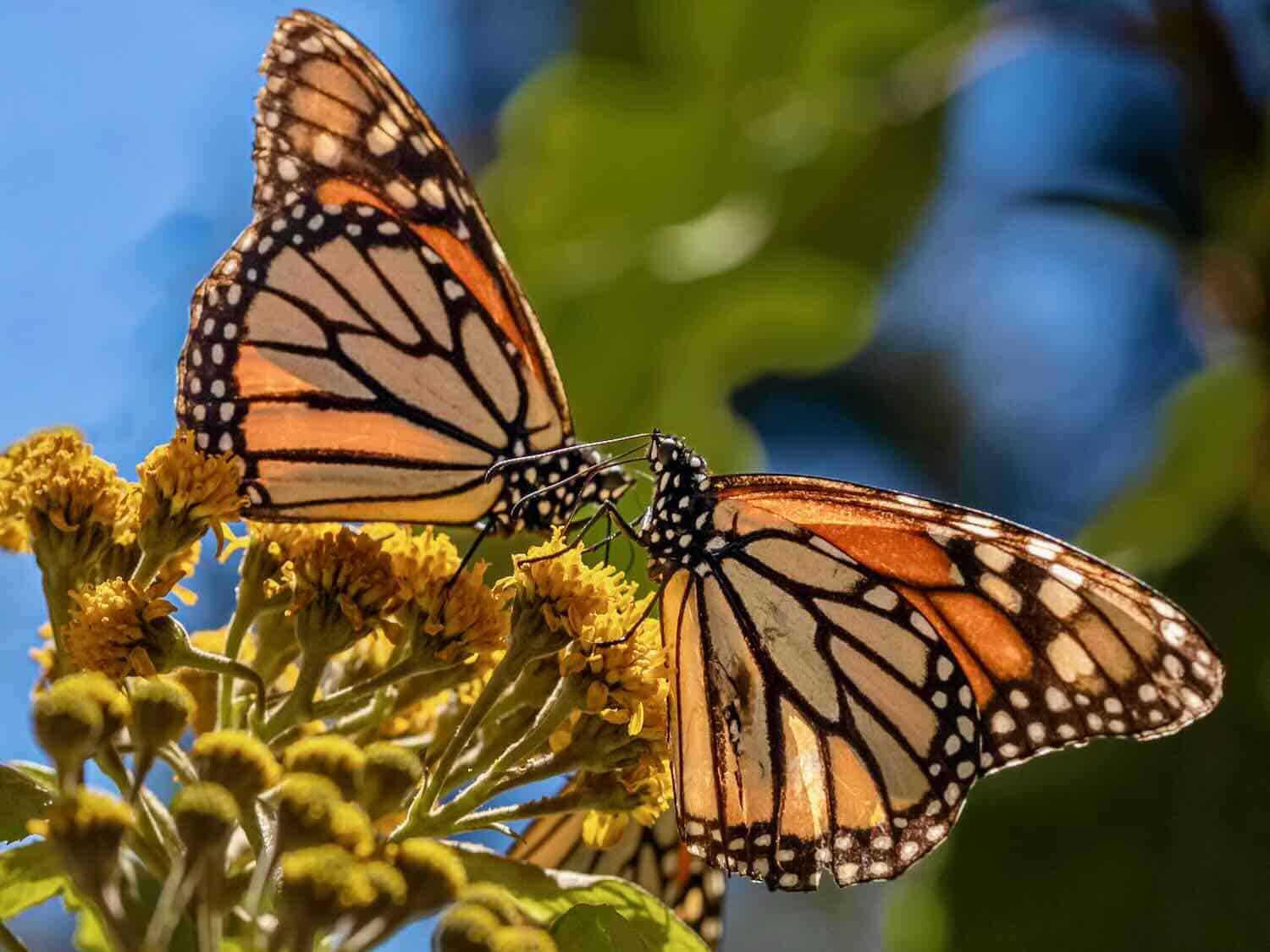
As we walked along the trail, I overheard other group members expressing their feelings of having stepped into a real-life National Geographic documentary. The sheer magnitude of the moment left some on the verge of tears.
Conversations echoed with phrases like “a once-in-a-lifetime moment,” “simply stunning,” “a miracle of wonder,” “a profound connection with nature,” and “exhausting but truly excellent.” These sentiments only further emphasized this encounter’s profound impact on all of us.
Reluctantly, the time came to leave, although I wished I could have stayed longer. Slowly, I descended the long, dusty trail, opting not to take a horse this time.
I made a conscious effort to cherish every moment, allowing my gaze to wander toward the ground, where I watched the shadows of butterflies playfully dancing like jumping polka dots. However, when I looked back up, I was instantly overwhelmed by the beauty of the distant mountains and the vibrant display of lightly flapping insects.
Mother Nature truly showcases her wonders in the most spectacular ways. This day gifted me with cherished memories that will last a lifetime.
Sierra Chincua Butterfly Sanctuary
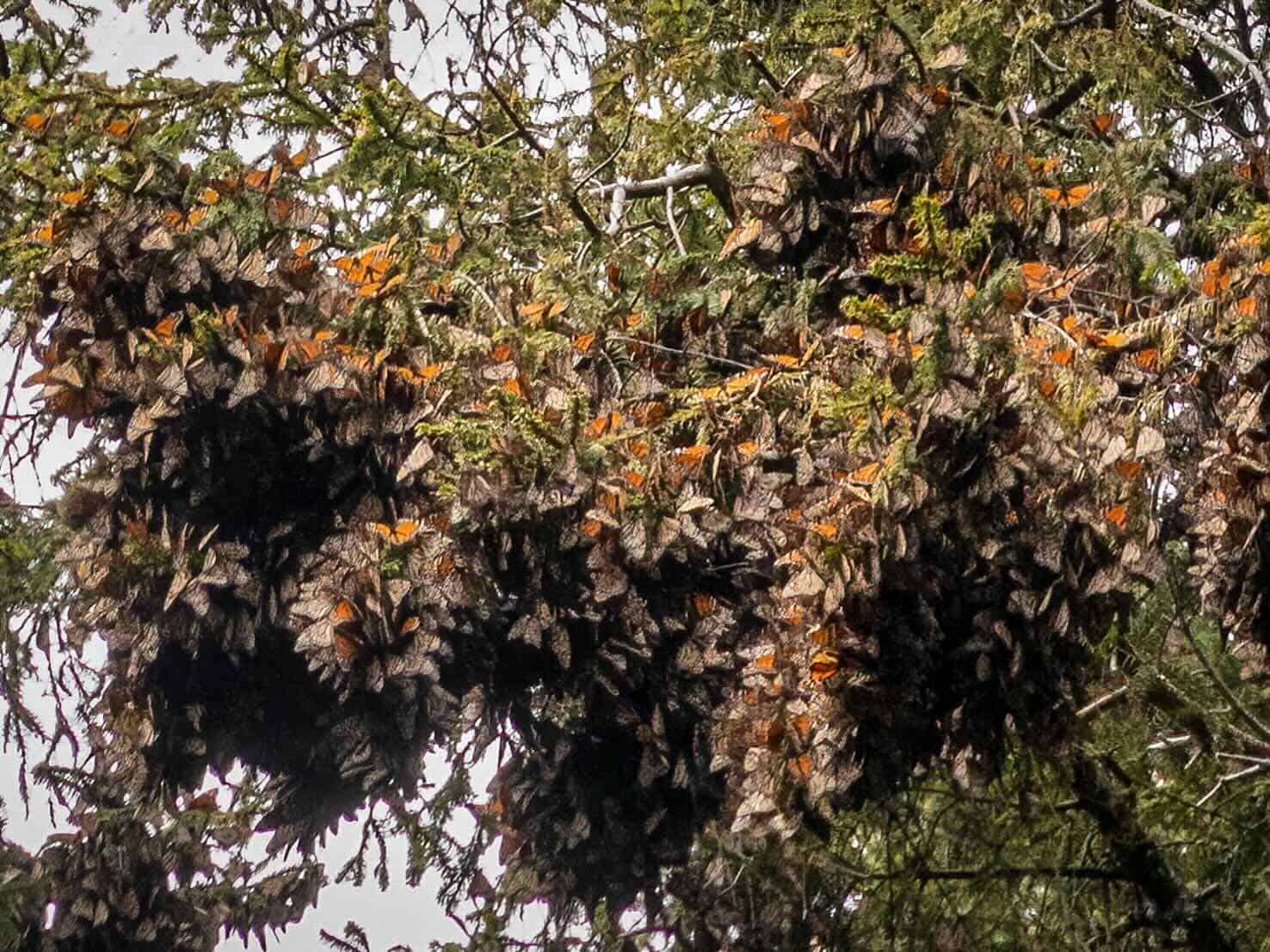
That night, I slept soundly, eagerly anticipating a second visit to butterfly heaven. However, the following day brought a drop in temperature below 55 degrees, with cloudy skies and a misty atmosphere. Our guide Kylee explained that due to the cooler weather conditions today’s excursion would witness a completely different sight of the butterflies at Sierra Chincua, another sanctuary.
Once again, the bus driver skillfully zig-zagged up the high mountainous roads. Upon arrival, the day’s excursion began with a hike through fields and up and down hills, taking us deeper onto a pathway in the forest.
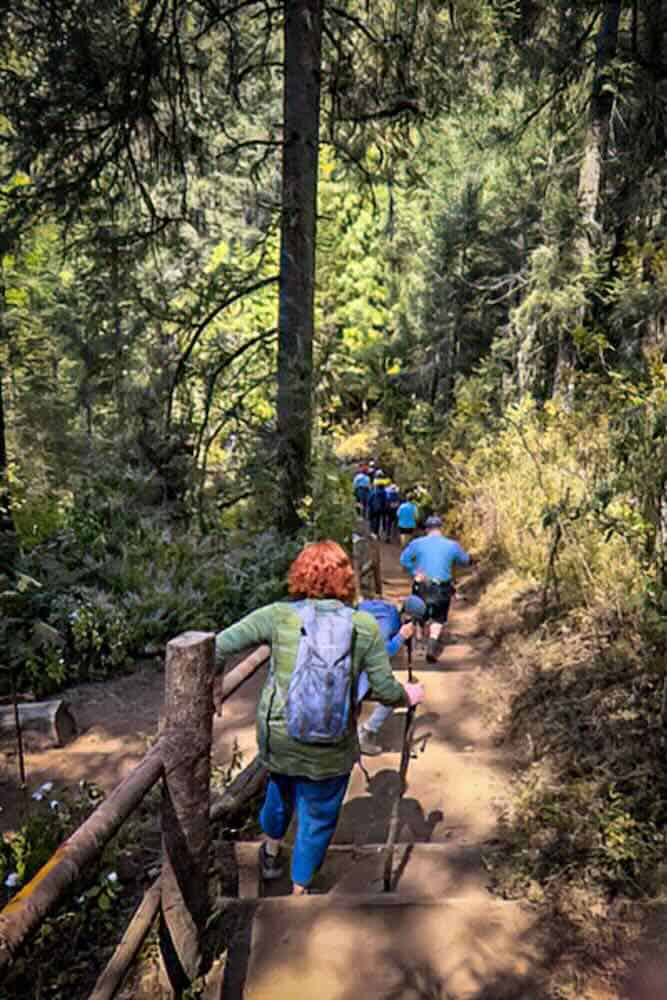
At times, we needed to step up and down stairs embedded in the trail. I recall thinking that I would have to climb up these exact steps on the return.
As we neared the observation section, the trail narrowed and steepened. We witnessed the butterflies clustered together, one on top of another, with tightly closed wings, so the mass appeared almost black.
High up in the fir trees, the branches bent downward with what resembled a dangling, giant termite nest or swollen beehives. The monarch butterflies snuggled and remained motionless except for one of the species arriving or departing. The butterfly groups blanketing the tree trunks looked more like clumps of rusty autumn leaves.
The overall sight was mystifying, but to be honest, slightly disappointing compared with the confetti-like flitting of monarchs on the previous warm day. It was especially challenging for photography.
However, as the old jingle goes, “You can’t fool Mother Nature,” we took our last look and began to trudge onward to retrace our steps.
We came to a place where horses were available to take us back to the start. I was indeed happy to hop on. Thankfully, I did because the way back seemed much longer than the hike into the forest.
Once returned to the starting point, we bought some lunch from a few vendors and browsed through the souvenirs. Butterfly earrings were particularly popular, as well as placemats and baskets made from the long oyamel fir needles woven together.
Angangueo: from mining to butterflies
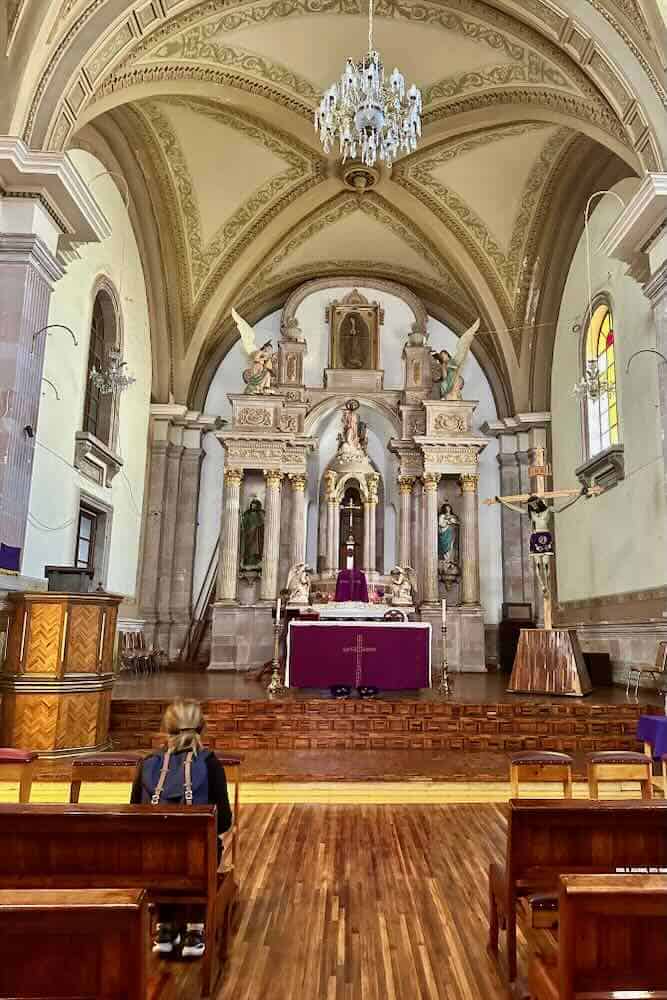
On our way back to our lodging, we stopped in Angangueo, a former gold and silver small mining town located at 8,400 feet. Mining peaked at the end of the nineteenth century and into the 20th.
However, tragedy struck in 1953 when a mine collapse claimed the lives of 25 residents. As a result, all the mines have closed. Now the town proudly promotes the butterflies.
We were led on a walking tour, passing a massive mural that depicted the Angangueo’s history. A charming dog tagged along with us, adding a fun touch.
After the tour, we savored the most delicious guacamole I have ever tasted. It was served in a large volcanic bowl, truly a culinary delight.
Before leaving, a few of us entered the main church with a high bell tower. Surprisingly, the same dog that had accompanied us throughout our visit followed me down the aisle to the altar. But he knew exactly where to find the water bowls left in the church. I guess he is a frequent parishioner.
Valle de Bravo: a luxurious Mexican resort
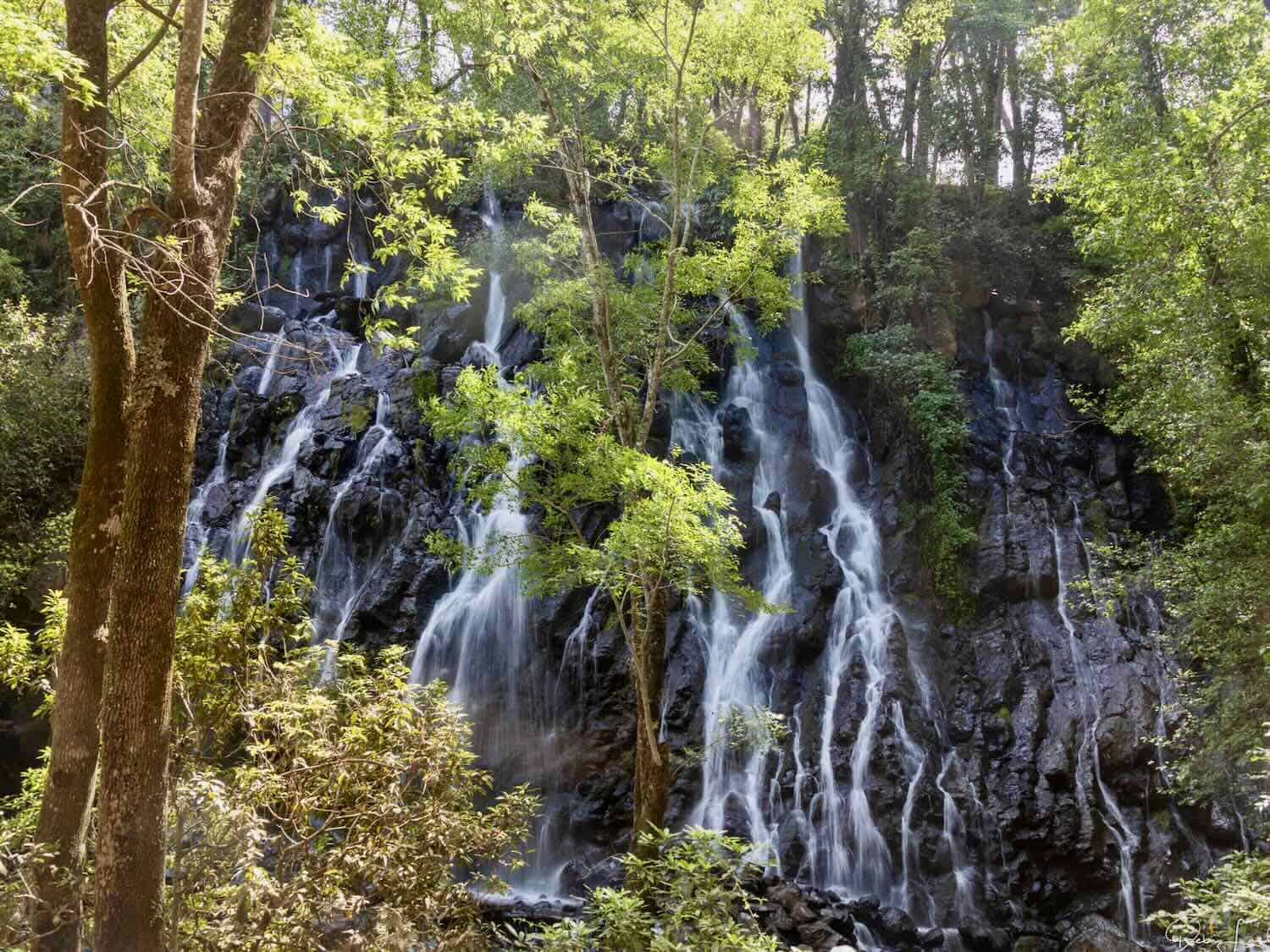
The next leg of our journey took us to a luxurious resort hotel in Valle de Bravo. Before reaching the resort, we stopped to hike to a scenic waterfall, again immersing ourselves in nature. Afterward, we savored the tastiest margaritas!

As evening descended, we gathered around a cozy fire pit, roasting marshmallows and reliving the incredible adventures we had experienced throughout our trip.
We ventured into the lake town of Valle de Bravo the next day, where we were delighted by its shops and authentic cobblestone alleys and plazas.
Cosmovitral Botanical Garden

On the way back to Mexico City, we made a quick stop in Toluca to see the Cosmovitral Botanical Garden. It rests within an old marketplace building about the size of a football field.
The gardens are lined with massive stained glass windows in contemporary designs. The central window features a Sun Man.
I enjoyed the stained glass more than the gardens, but the attraction is worth a visit.
Returning to Mexico City
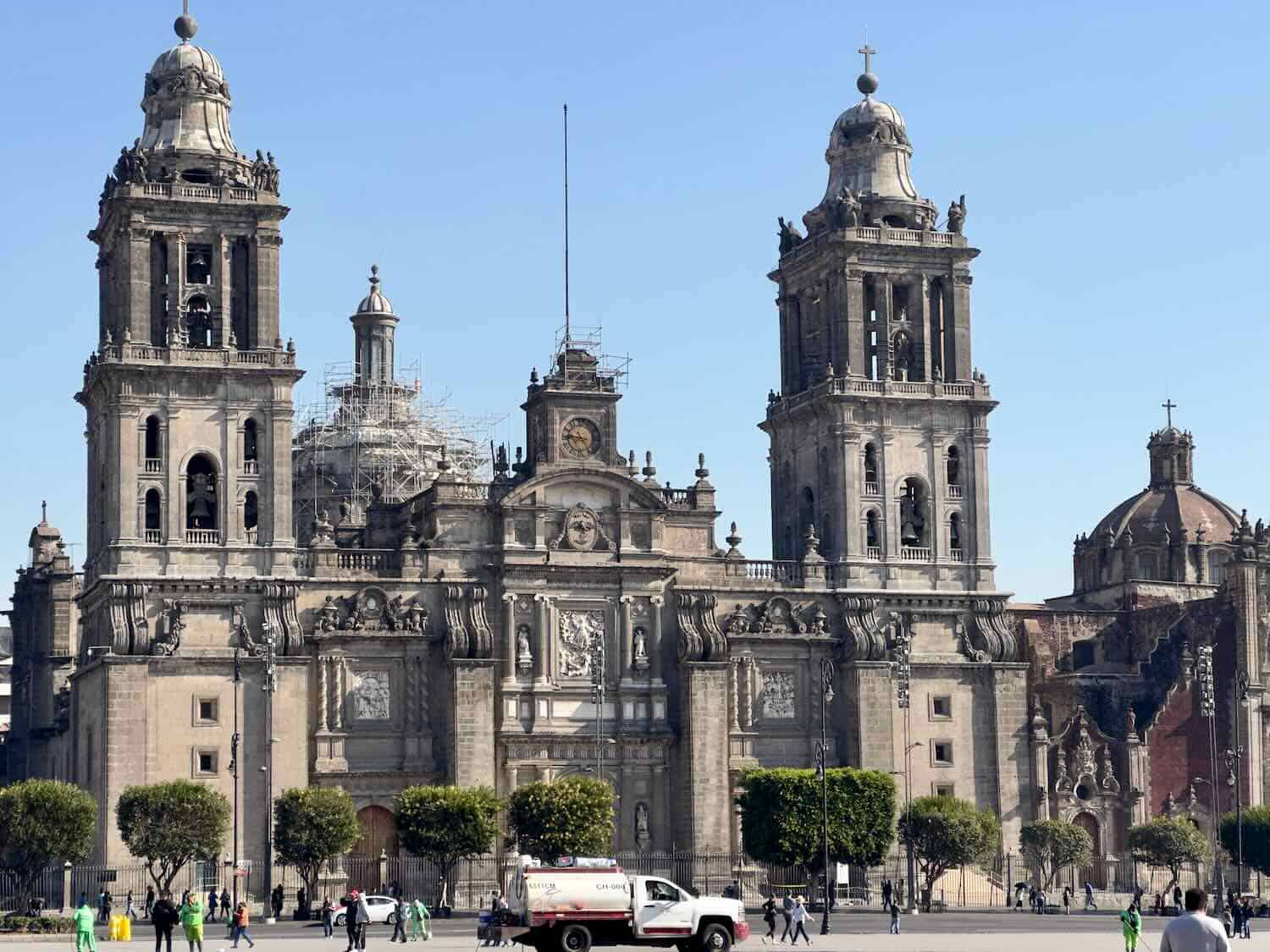
The group returned to Mexico City, knowing that we had only one more day to explore the vastness of this incredible city. The next morning, I eagerly joined a tour of the historic city center filled with colonial architecture and rich history.
The ruins of Templo Mayor (official website), a pyramid built in pre-Hispanic times, surprised me, here in the center of downtown. The structure acted as one of the main places of worship for the ancient inhabitants.
I saw some of Diego Riviera’s murals in the Palace of Fine Arts (Palacio de Bellas Artes) where I learned that museums were free for seniors with I.D. The Folk Art Museum (yes, free admission) stood out as an authentic treasure of fine handicrafts among the various attractions. You’ll find fantastic souvenirs in the gift shop, which also carries many fine artisan wares.
However, I regret that I hadn’t planned extra days to visit Frida Kahlo’s house and museum and the Xochimilco (pronounced so-chee-mil-ko) district, another World Heritage Site. Here lies an intricate network of canals, colorful gondola boats, floating food vendors, and mariachi bands.
Mexico City boasts an impressive number of museums, so if you plan to visit, set aside ample time for exploration and indulge in authentic Mexican cuisine. But, don’t miss the extraordinary Monarch Butterfly Bioreserve Reserve, even if you only take a day trip.
My trip with Craftours was self-funded, and I highly recommend it.


